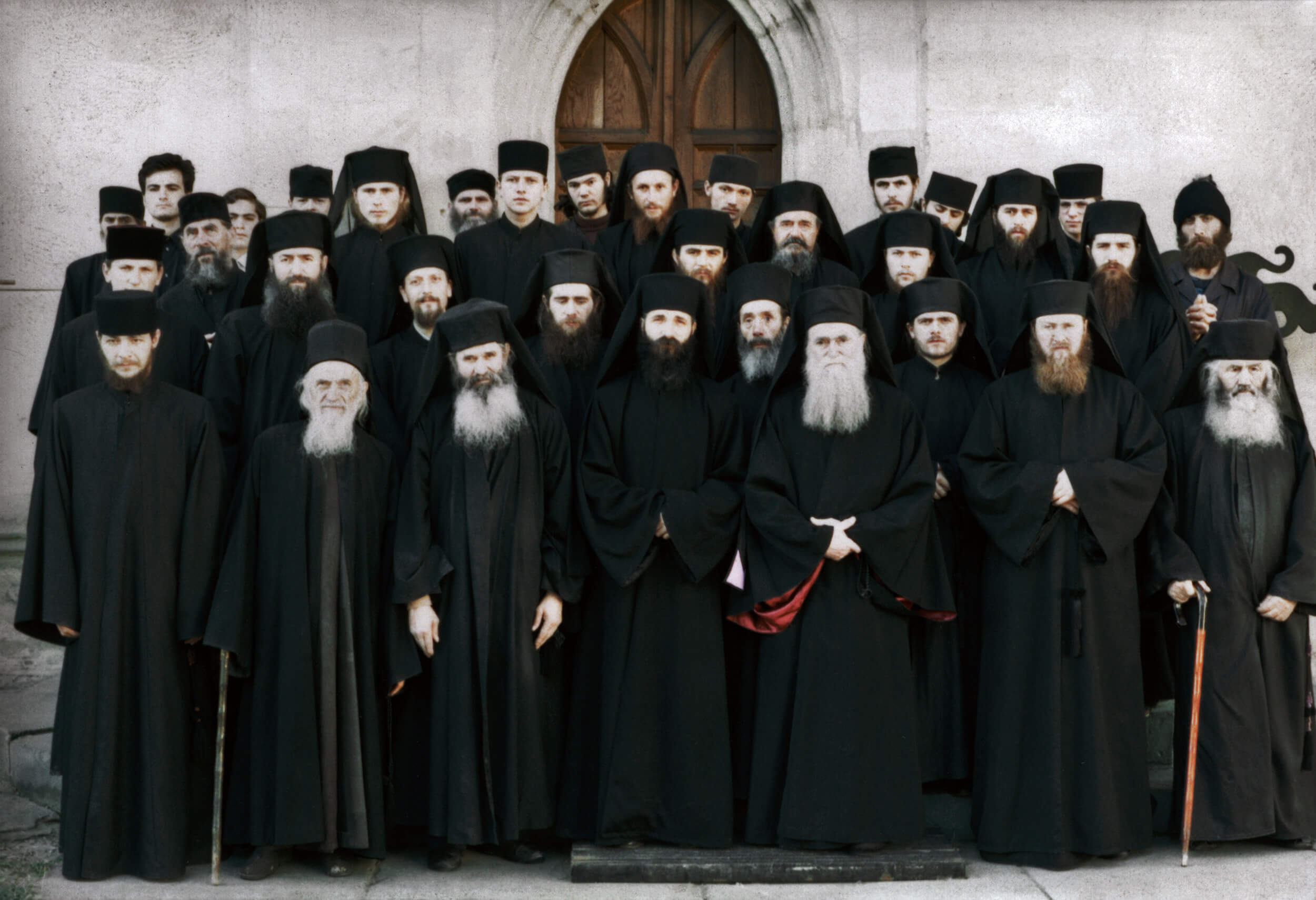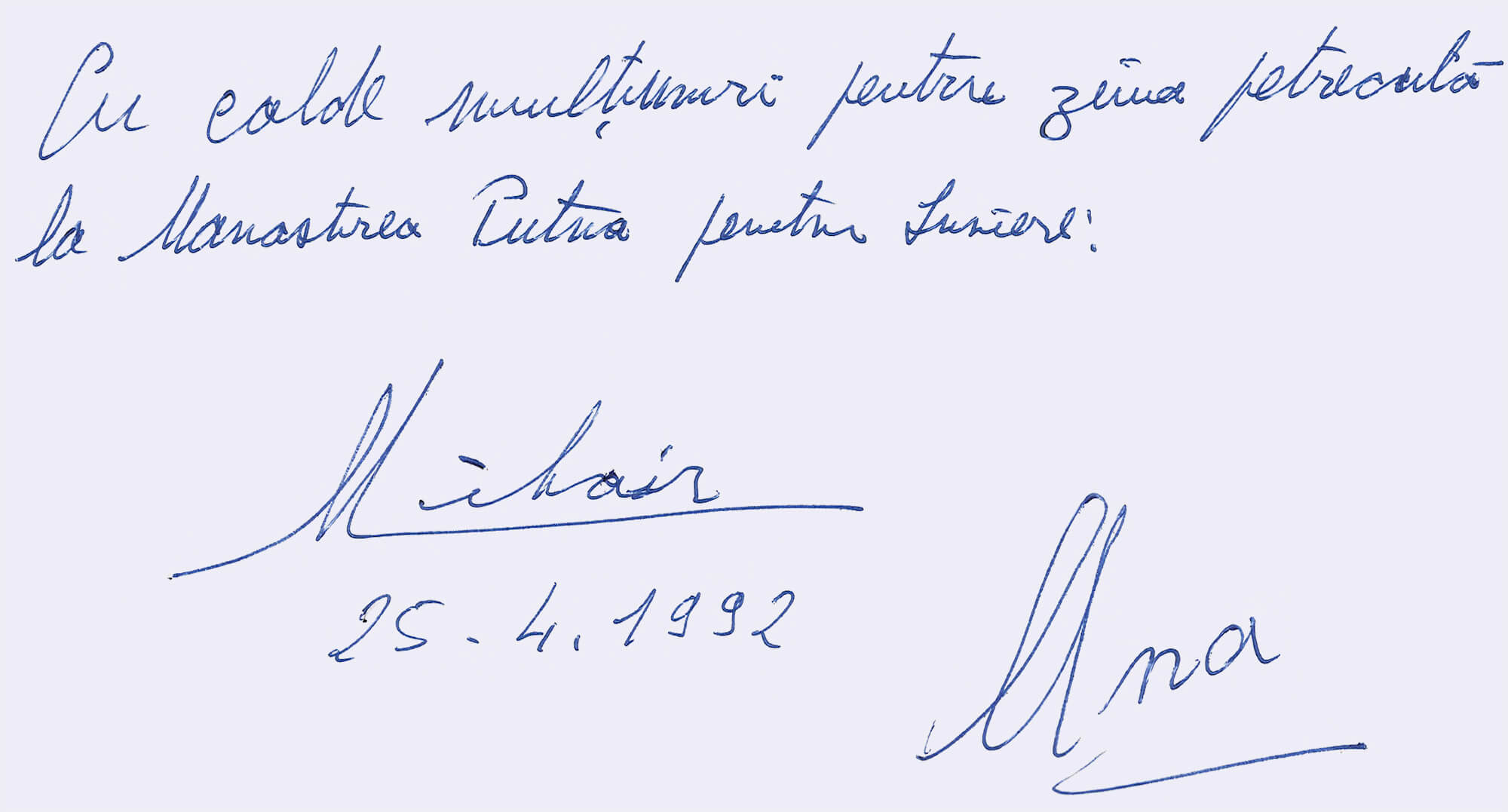After the fall of the communist regime following the Revolution of December 1989, Abbot Hyacinth steered the monastery in such a way that the transition to outer freedom would not give rise to internal imbalances, as was the case of many institutions and many Romanians. Due to his old age, in December of 1992 Archimandrite Hyacinth Unciuleac retired from his abbacy, and the brotherhood elected Hieromonk Melchizedek Velnic as abbot of the monastery.

The first important initiative after December 22, 1989 was the reopening of the Sihăstria Putnei (“Putna Hermitage”) Skete with monks from among Putna’s brotherhood. In 2001, the skete became a full‑fledged monastery.
New workshops were set up. In addition to the tailoring workshop, a painting one was added in 1996, where fathers who had apprenticed at Makri Monastery in Greece began to paint Byzantine icons. The connection with Makri Monastery, strengthened especially through its father confessor, Archimandrite Polycarp Matzaroglu, was particularly fruitful. Sculpture, icon restoration, gilding workshops followed soon.
During those years, the construction, maintenance, and necessary endowment of the monastery continued. New cells were built. The Bessarion Puiu Guest House was restored for pilgrims and a new guest house, Saint Nicholas, was built, along with a chapel consecrated to the same saint. In 2015-2019, the National Investment Company built the “Metropolitan Jacob of Putna” Cultural Center. With the help of the same National Investment Company, the “Saint Nicholas” House was built between 2021 and 2023.

In that same period important visits were received. On April 25, 1992, at the invitation of Abbot Pimen, King Michael came to Putna to partake in the Feast of the Lord’s Resurrection. It was the King’s very first visit after his expulsion by the communist regime in 1947.

In 1994, Archbishop of Canterbury, Robert Runcie, visited Putna accompanied by Patriarch Theoctistus.
On October 30, 1995, during the manifestation occasioned by the 110 years of autocephaly of the Romanian Orthodox Church and the 70 years since the recognition of the Romanian Orthodox Patriarchate, a delegation of the Patriarch of Constantinople, Bartholomew I, and representatives of all the Orthodox patriarchates arrived to Putna. The following day the Holy Liturgy was officiated by Patriarch Pavle of Serbia.

The monastery hosted various student events, such as the Congress of the Romanian Orthodox Christian Student Association (2005) and the Young Romania Congress (2011), and numerous pupil manifestations: religion olympics, the Contest of National Culture and Spirituality, and other competitions and camps. Putna monks were asked to serve or to speak on spiritual topics in different places in Romania, Bessarabia, northern Bukovina, and abroad.
With the support and care of the monastery, new sketes, such as Putna Hermitage, Daniel the Hermit Hermitage, Saint Elijah—Salaș Hermitage, and the Metochion of the 12 Apostles were found or built.
The canonization of Saint Stephen the Great along with that of Saint Daniel the Hermit on July 2, 1992 represented a consecration of the piety the Romanian people always had for their glorious voivode. The solemn proclamation of his canonization was held at Putna on his feast day, July 2, in the presence of Patriarch Theoctistus and a great number of hierarchs and clerics.
The celebration of July 2, 2004 marked the 500 years since the death of Saint Stephen the Great, and it involved many preparatory activities: the restoration of the iconostasis; the planting on the Cross Hill of fir‑trees that spell out the name ȘTEFAN; the elevating on the same hill of a 28‑meter metal cross, on which Radio Trinitas Putna’s broadcast antenna was mounted.











